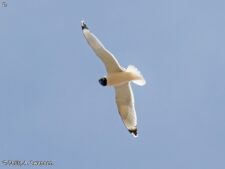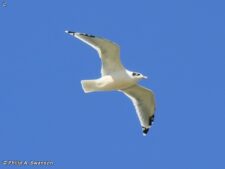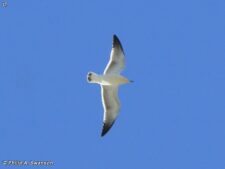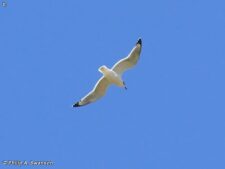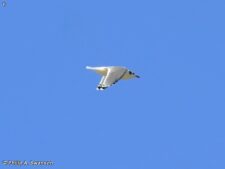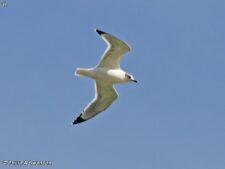
14.5 inches long. 36 inch wingspan. Franklin’s Gulls have an overall white body with a dark gray back and upperwings. On adult breeding birds the bill is red and the head is black with bold white crescents above and below the eye. There is often a light pinkish bloom on the breast and belly in spring. The white tail has a gray center on the upperside. The underwing on flying birds shows dark primaries with bold white tips. The dark primaries are separated from the gray upperwing by a white crescent. Since it is most likely that this bird will be seen flying over the Forest, the wing pattern is the best field mark to use. On fall birds the bill is black and there is a black half hood on the rear of the head. Immature Franklin Gulls have all black wing tips and a black band on the tip of the tail that does not extend all the way accross the tail.
The Franklin’s Gull is a common migrant through the Omaha area. It may be seen flying over the Forest from mid March through late May in the spring and again from late July through late October in the fall.
The pinkish bloom on spring Franklin’s Gulls led early ornithologists to call it the Rosy or Prairie Dove. It has a light, buoyant flight. The Franklin’s Gull nests in small to very large colonies in marshes of interior North America. In migration and the breeding season, this is a familiar bird with large flocks following farmers disking their fields, where they eat earthworms, grasshoppers, grubs, seeds, and occasionally mice. On lakes and marshes, the Franklin’s Gull also feeds aerially on flying insects and snatches recently emerged insects from the water surface.
Disclaimer: The content of NatureSearch is provided by dedicated volunteer Naturalists of Fontenelle Forest who strive to provide the most accurate information available. Contributors of the images retain their copyrights. The point of contact for this page is: Phil Swanson.

